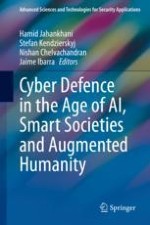2020 | OriginalPaper | Buchkapitel
Attack Vectors and Advanced Persistent Threats
verfasst von : Sergio F. de Abreu, Stefan Kendzierskyj, Hamid Jahankhani
Erschienen in: Cyber Defence in the Age of AI, Smart Societies and Augmented Humanity
Aktivieren Sie unsere intelligente Suche, um passende Fachinhalte oder Patente zu finden.
Wählen Sie Textabschnitte aus um mit Künstlicher Intelligenz passenden Patente zu finden. powered by
Markieren Sie Textabschnitte, um KI-gestützt weitere passende Inhalte zu finden. powered by
